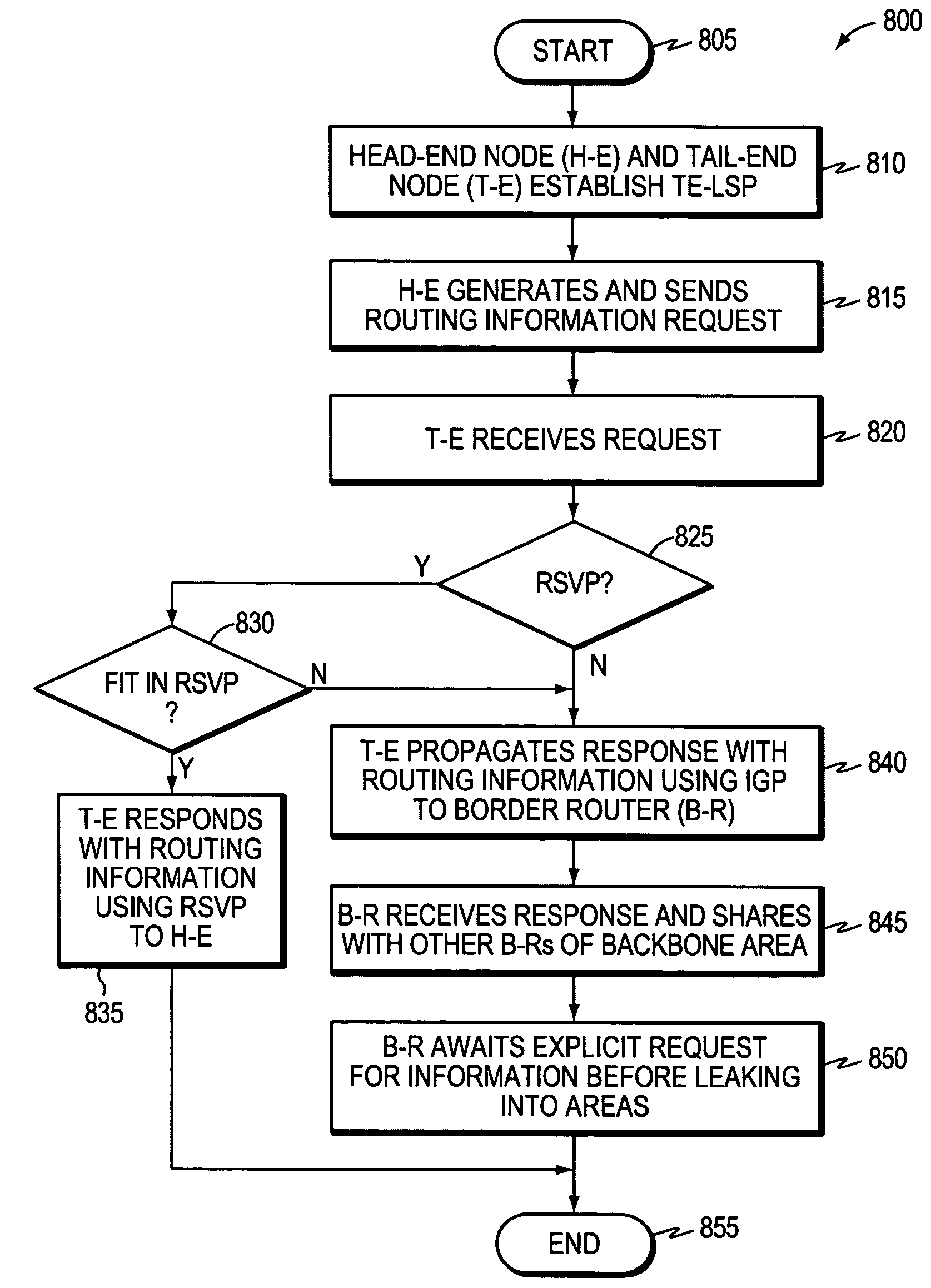Controlled distribution of inter-area routing information
a routing information and control technology, applied in the field of computer networks, can solve the problems of unsatisfactory, unsatisfactory, and unsatisfactory, and achieve the effect of limiting the excess distribution of message traffi
- Summary
- Abstract
- Description
- Claims
- Application Information
AI Technical Summary
Benefits of technology
Problems solved by technology
Method used
Image
Examples
Embodiment Construction
[0040]FIG. 1 is a schematic block diagram of an exemplary computer network 100 comprising level 1 levels A, B, and C, interconnected by a backbone level 2 as shown. Illustratively, network 100 employs the Intermediate-System-to-Intermediate-System (IS-IS) routing protocol as its interior gateway protocol (IGP), known to those skilled in the art. Within network 100, levels 1A, 1B, and 1C have exemplary intradomain routers A, B, and C, respectively. Each level 1 level is connected to the level 2 backbone by a border router, or level 1 / level 2(L1L2) router, such as L1L2 router D, E, and F, also respectively. In addition, shown within Level 1C are exemplary address prefixes IP1, IP2, and IP3, which are reachable from Level 1C as shown. Notably, the address prefixes need not be contained within Level 1C, as will be understood by those skilled in the art. As used herein, a level is a collection of routers that share full network topology information with each other but not necessarily wit...
PUM
 Login to View More
Login to View More Abstract
Description
Claims
Application Information
 Login to View More
Login to View More - R&D
- Intellectual Property
- Life Sciences
- Materials
- Tech Scout
- Unparalleled Data Quality
- Higher Quality Content
- 60% Fewer Hallucinations
Browse by: Latest US Patents, China's latest patents, Technical Efficacy Thesaurus, Application Domain, Technology Topic, Popular Technical Reports.
© 2025 PatSnap. All rights reserved.Legal|Privacy policy|Modern Slavery Act Transparency Statement|Sitemap|About US| Contact US: help@patsnap.com



